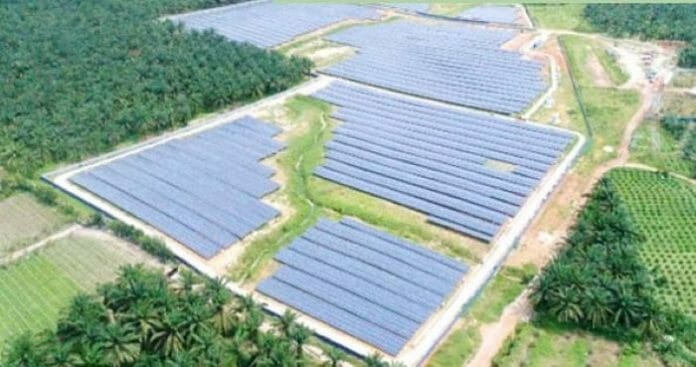Under the National Energy Transition Roadmap (NETR), the government has set an ambitious target of RE making up of 70% of total generation capacity by 2050 (vs. 25% currently) with an aspiration to achieve net zero GHG by
These targets entail at least 20GW of new RE from now until 2050, of which >90% is expected to come from solar. The
government has introduced a laundry list of initiatives to promote investment in solar power generation comprising the Feed-in Tariff (FiT) programme, NEM mechanism, Large-Scale Solar (LSS) and CGPP projects. Over the immediate term, the flow of PV system EPCC jobs will come from the CGPP with a completion deadline by end-2025, following the completion of Large-Scale Solar 4 (LSS4) in end-2023. Based on estimates, the 800MWp capacity under the CGPP will translate to RM2.4b in PV system EPCC jobs.
Subsequently, the Energy Commission will also embark on LSS5 with a capacity quota of 2GW, which allows developers to bid for up to 500MW (vs. only 50MW previously). Investment house Kenanga estimates that LSS5 will generate RM5b worth of PV system EPCC jobs, which can keep PV system EPCC contractors busy until 2028. In addition, there is a new 400MW quota under the NEM scheme from Feb to Dec 2024 to further encourage investment in solar energy assets. Businesses in general, driven by commercial reasons (i.e. to save cost) and ESG considerations, have voluntarily invested in solar energy generation assets following the recent hikes in electricity tariffs.
Kenanga said it projects a lower average module price of USD10 cent/W in CY24 vs USD 18 cent/W in CY23, as Tier1 solar panel manufacturers such as Tongwei, JA, Longi and Jinko flood the market with solar panels. This trend follows a multiyear decline in solar panel prices, plummeting ~92% from USD1.33/W in 2010.
Bloomberg NEF, a leading energy researcher, projects a 29% jump in global solar panel installation to 574GW in 2024 from 445GW in 2023. However, the house anticipates slower demand growth thereafter, at 9% and 7% in 2025 and 2026, respectively, primarily due to constraints such as accessibility to grid, land and labour. China is expected to maintain its position as the largest solar panel consuming country in the world, commanding a 55% share of the total 574GW of new solar panel installation in 2024, followed by the US (7%) and India (3%). While the demand for solar panels globally is rising on a rapid pace on the transition to green energy, it is outstripped by the supply growth of solar panel. BloombergNEF describes the current state of the solar panel industry as “a game of chicken” amongst the players to see “who will succumb to the pressure and exit the market first”. The players are far from stopping at where they are at present.
All in all, prices of solar panels are at historically low levels and supply of components is abundant.
Consequently, while solar panel makers struggle to make a profit, PV system EPCC contractors enjoy good margins and are poised for more jobs as cheap solar panel prices stimulate investment in PV systems. For projects subsequently to LSS4, the capex for PV systems is likely to come in lower than about RM2-2.5m/MW for the LSS4 rollout given the lower solar panel prices. This should raise IRR to the low to mid-teens, vs.8% under LSS4.
Kenanga picks SLVEST for its strong market position, execution track record, clientele and value proposition of its PV system financing programme, and its strong earnings visibility backed by sizeable outstanding order and tender books, and recurring incomes from a growing portfolio of solar assets. The house also likes SAMAIDEN given its focus on residential and commercial projects that typically fetch higher margins, and similarly, its ability to provide end-to-end solutions, including financing to its customers and strong earnings visibility backed by sizeable outstanding order and tender books.









